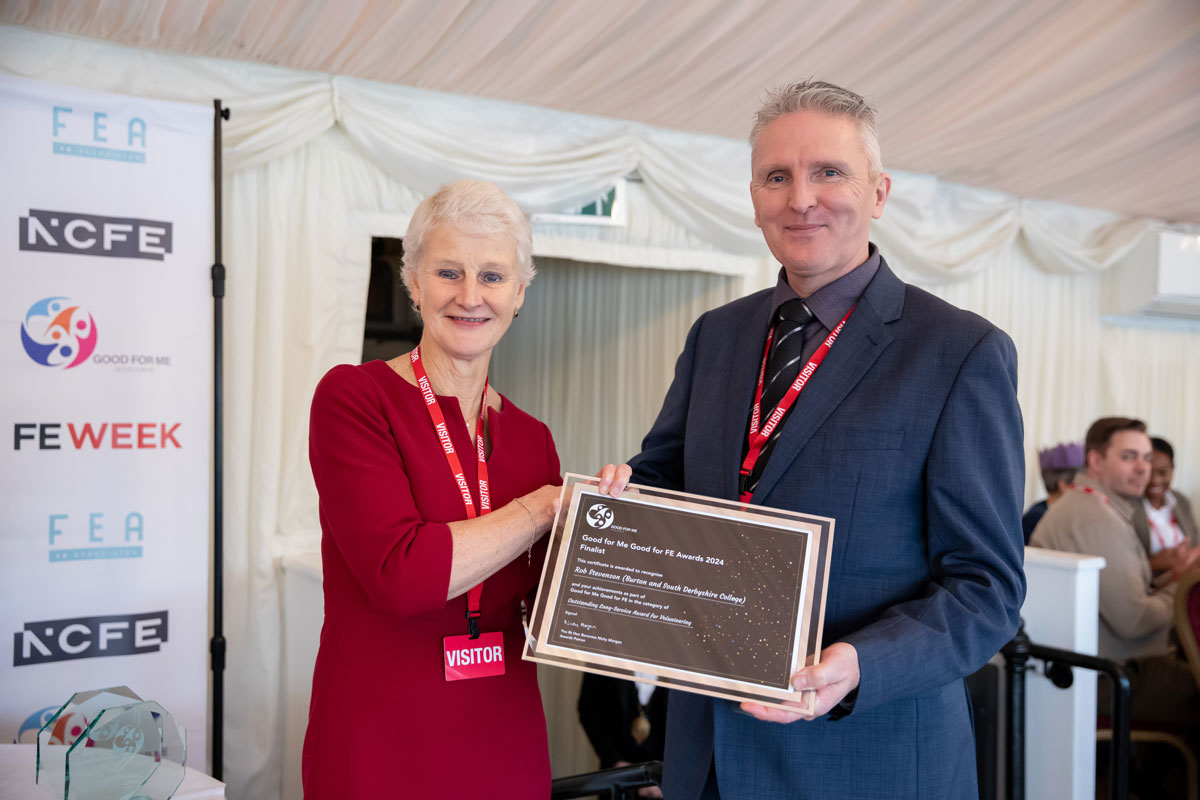The financial sustainability of higher education providers

Universities’ finances proved more resilient during the COVID-19 pandemic than had been feared but challenges remain in the medium and long-term.
As the Office for Students develops as a regulator, it will need to do more to communicate with higher education providers and other stakeholders to build a shared understanding of the aims and means of financial regulation in the sector, according to the National Audit Office’s (NAO) latest report Regulating the financial sustainability of higher education providers in England.
The report finds:
- University finances proved more resilient during the pandemic than had been feared, but medium-and long-term risks to financial sustainability remain;
- The Office for Students (OfS) makes good use of the financial data it has but it is not clear that higher education providers understand how the data is used; and
- During the COVID-19 pandemic, the OfS found that it needed stronger powers to intervene to protect students’ education if providers were at risk of going out of business.
The Office for Students (OfS) has regulated the higher education sector since 2018 and is sponsored by the Department for Education (the Department). The OfS’s objectives include helping students access education, ensuring they have a high-quality experience, making sure they can progress into employment or further study, and ensuring they receive value for money.
Should higher education providers become financially unsustainable or unviable, students would be adversely affected in all these areas. The COVID-19 pandemic added to existing financial stress in the sector, and began when the OfS was still relatively new.
The NAO recommends that the Department works with the OfS to agree how best to measure the impact of the regulatory regime for the higher education sector.
OfS should communicate more effectively to build trust in its approach as a regulator, and should be more ready to share sector insights to improve efficiency in the sector.
Gareth Davies, head of the NAO said:
“While no higher education providers have failed under the regulation of the Office for Students, the number in deficit has risen significantly. Sector-wide issues that were causing financial stress before the impact of COVID-19 have not gone away and will continue to add pressure.
“The sector’s financial sustainability can have a profound impact on the value for money of education for two million students every year. The Office for Students should improve how it communicates with individual providers to build trust in its approach. As it matures as a regulator, it should also be making better use of its insights to reduce risks that could lead to financial failure.”
Sector response

Meg Hillier MP, Chair of the Committee of Public Accounts, said:
“Over recent years the higher education sector has been under increasing financial strain and COVID has only added to the pressure.”
“The OfS has a critical role in monitoring the financial health of education providers. It’s made a good start in difficult times but clearly needs to do more to get providers on board with its approach.”
“However, despite more than half of students thinking their course isn’t value for money, the OfS doesn’t have a measure for this. Students deserve better.”
“It’s vital that the OfS, DfE and the higher education institutions work together through these teething issues to create a robust and positive regulatory environment which best supports students.”

Nicola Dandridge, chief executive of the OfS, said:
“We welcome the focus of the NAO on the financial sustainability of higher education providers. This is an issue of significant importance to students and the wider communities that universities and colleges serve, as well as to taxpayers.
“When the pandemic began, we made regulating the financial sustainability of universities and other higher education providers a priority. We streamlined our requirements, and required universities and colleges to report to us if they believed their liquidity would drop below 30 days expenditure. We engaged with the vast majority of them during the early stages of the pandemic to test their plans to manage the impact of the pandemic on their financial position. We also used an interim data return to build an early picture of the impact of the pandemic across the sector as a whole.
“We have worked closely with a small number of providers who have reported concerns about their financial position. We welcome the NAO’s acknowledgement of the OfS’s good use of financial data.
“There is – as the report rightly notes and as we have made clear – considerable variation in financial performance and outlook between individual providers. However, the predictions by others that dozens of providers would fall victim to the financial pressures of the pandemic have not materialised. Providers generally entered the pandemic in good financial shape, adjusted their financial strategies appropriately, and made prudent use of borrowing to protect financial viability. Student recruitment remained buoyant.
“Universities and other higher education providers are responsible for running their businesses, and the OfS has always been clear that it is not our role to bail out those that would otherwise fail. Where a provider is facing financial challenges, we will intervene to ensure that it takes action to enable students to continue their studies. The data and other intelligence we routinely collect ensures we stay alert to risks and challenges for individual providers and the sector as a whole.
“We are carefully reflecting on the NAO’s recommendations on where we could do more in our engagement with universities, colleges and other providers. So, for example, we are currently taking forward work to capture providers’ perspectives on a range of issues, including financial sustainability, and we will take the NAO’s views into account in that context.”
A Department for Education spokesperson said:
“Universities and colleges have done a fantastic job throughout the pandemic. Despite the challenges they have faced, both this report from the NAO and the most recent report from the OfS make clear that overall the HE sector remains financially resilient.
“Higher education is a key part of our skills revolution, which is why we have recently set out reforms to boost the sustainability of our world-class higher education system, including ensuring the student loan system is fairer for both students and taxpayers.
“This is backed by nearly £900m to support teaching and students including the largest increase in government funding for the HE sector in over a decade.”
HEIs with an in-year deficit grew to 32% in 2020
The proportion of higher education providers with an in-year deficit increased from 5% in 2015/16, to 32% in 2019/20. Financial stress is not confined to one part of the sector; the 20 providers that have had a deficit for at least three years range in size from 200 students to more than 30,000. During 2020/21, 33 out of 247 providers (13%) had forecast that, by the end of the year, they would not have enough money to continue to fund at least 30 days’ expenditure from their cash or credit facilities.[1]
Short-term financial risks in the higher education sector are dominated by the COVID-19 pandemic, but medium- and long-term risks are more deep-seated. The pandemic meant higher education providers had to invest in new ways of teaching, while dealing with risks that they would lose income from a fall in international student fees, conferences, accommodation and research. Some providers are highly dependent on fees paid by international students and face financial risks that pre-date the pandemic. In addition, valuations of pension schemes (particularly the Universities Superannuation Scheme) indicate that higher employer contributions will be needed.
The OfS makes good use of the financial data it collects, analysing it in a systematic way to identify which providers require closer scrutiny. In addition to collecting detailed annual financial and performance data, the OfS requires providers to report events such as breach of conditions associated with loans, changes to teaching provision, or other events that might increase financial risk. During 2021, the OfS identified 98 out of 245 providers (40%) for detailed review of their financial viability and sustainability. The OfS has undertaken some financial analysis and scenario modelling of key risks but it does not yet have an integrated model to assess the impacts of long-term financial stress in the sector. Its heavily data-driven approach to assessing financial risk does not yet have the full confidence of all providers. As at December 2021, the OfS had made 10 providers subject to enhanced monitoring because of concerns about increased risk to their financial viability.
The Department and the OfS have not yet been successful in achieving a good understanding among providers of why the OfS collects all the data it does, and how it uses it. The sector bodies and providers that that the NAO spoke to said the OfS did not routinely speak with most higher education providers, leading them to doubt whether the OfS had all the information needed to put financial data into context. The OfS considers it has engaged with providers sufficiently to understand risks to their financial sustainability. Early in the COVID-19 pandemic, the OfS spoke to most higher education providers to understand how they were responding to new pandemic-related risks, which was well received.
During the COVID-19 pandemic, the OfS found that it needed stronger powers to intervene to protect students’ education if providers were at risk of going out of business. It found there were common weaknesses in student protection plans[2] – including providers being over-optimistic about the risks they faced, lack of detail about what specific actions providers would take, and weak refund and compensation policies. Student satisfaction fell sharply between 2020 and 2021, when pandemic lockdown measures were in place. In a survey in early 2021, 33% of undergraduates said they thought university offered good value for money and 54% thought it did not. In April 2021, the OfS adopted new powers that allow it to direct providers at risk of market exit to implement specific measures to protect students.
A-level grade inflation distorted the higher education market, and increased financial risk for some providers. The Department’s adoption of grades assessed by schools and teachers in place of examinations in the summers of 2020 and 2021 meant more students were eligible for places at their first-choice provider. This caused challenges for both oversubscribed and undersubscribed universities.
[1] The OfS uses liquidity (a measure of a provider’s ability to continue to pay its bills) as an indicator of the risk of a provider failing. The OfS does not apply rigid targets, but it normally engages with providers if their liquidity falls below 30 days’ expenditure.
[2] The OfS requires all higher education providers to have in place a student protection plan appropriate for the level of risk presented by the provider and for the risk to continuity of study for all its students. No student protection plan has ever had to be implemented at short notice.











Responses